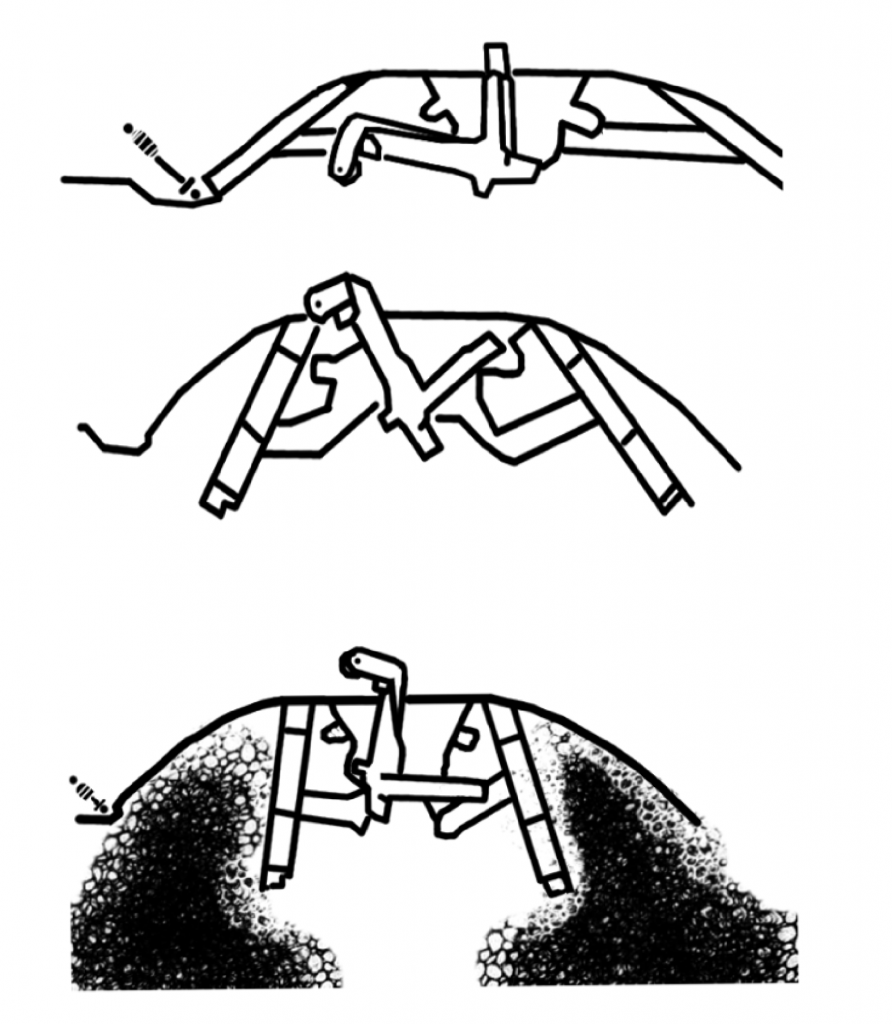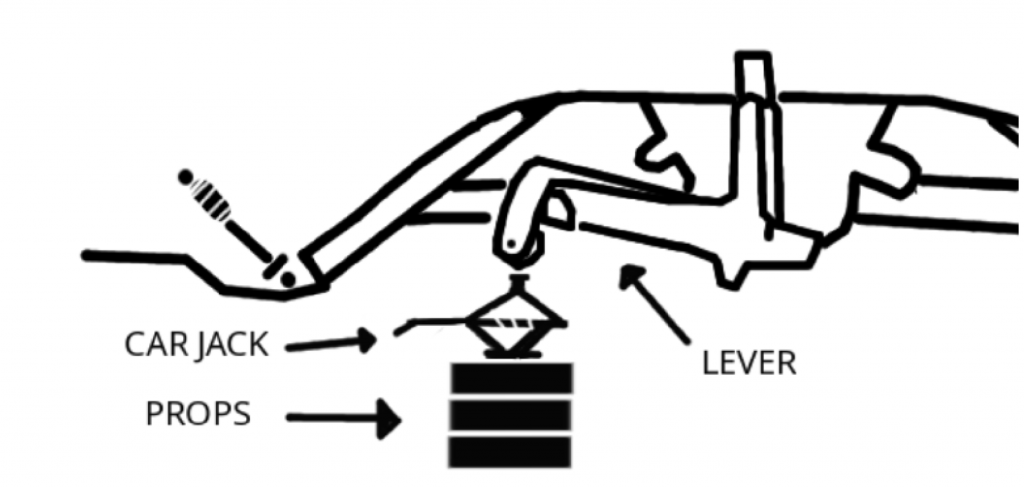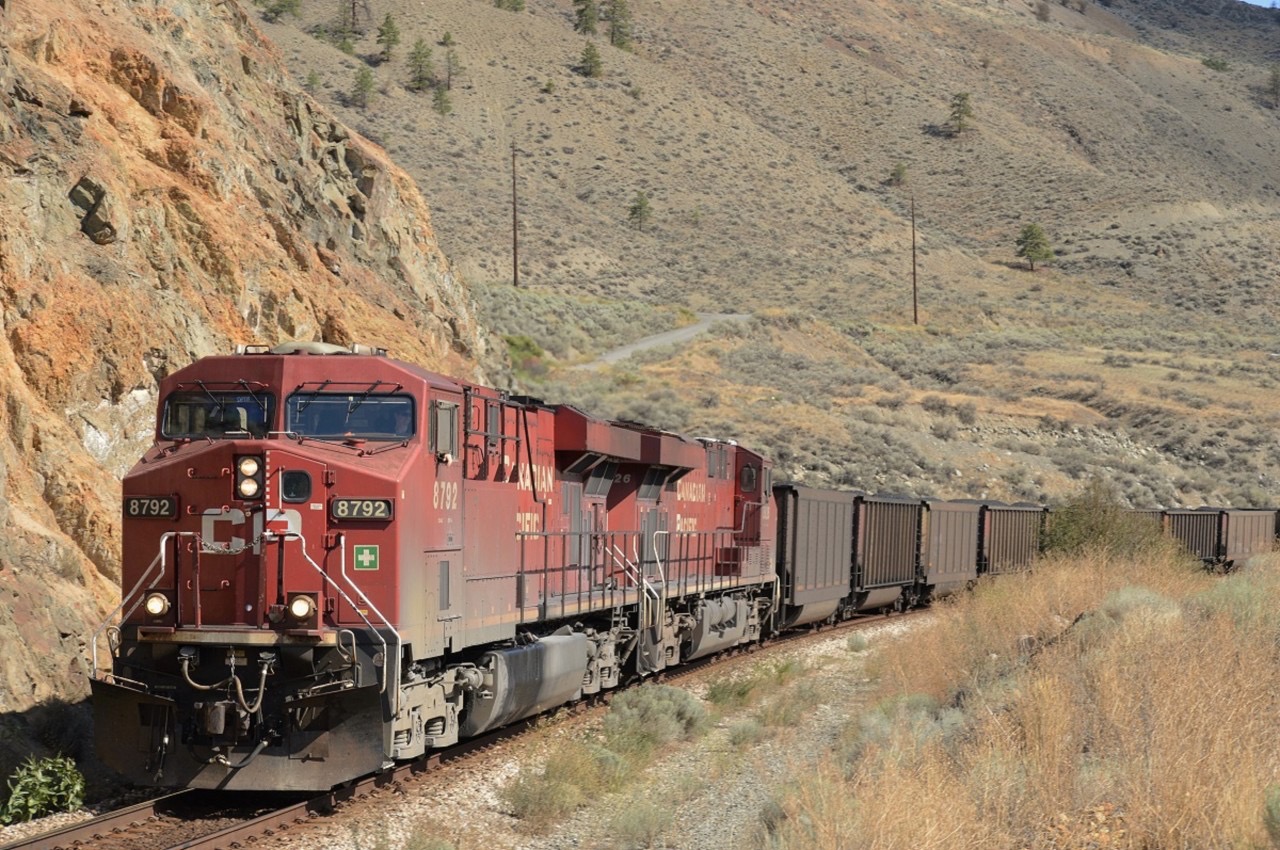This manual is reproduced from a submission to MTL Counter Info.
Here is a zine detailing how anti-extractivists can disrupt coal rail infrastructure utilising the tactic of unloading coal trains. The zine contents follow us text below, or you can download the PDF.
Unloading a coal train can be simple!
(And highly disruptive to a coal railway line)
⚠️ This guide is produced with limited knowledge and testing, please update or create new guides based on learnings and experience gained over time. ⚠️
This document is modeled off a generic coal train, models may vary so do not rely on this information without local site specific research. This mechanism may also exist similarly on other trains carrying similar resources, like gravel or minerals.
Here is a standard model of a coal carriage; it has 4 hatches and levers alongside the carriage that release the coal.


When a lever is pushed upwards the hatch opens and releases the coal. The lever only needs to be lifted up a few centimeters for the hatch to swing open.

The lever mechanism on an empty carriage can be tested more simply as it requires far less force to lift the lever and open the hatch than on a loaded carriage. 1-2 people pulling upwards by hand should be enough.
On a loaded carriage the lever requires a lot of force to move it even very slightly. This should still feel easy with a car jack, but can be very difficult using other tools like a lever bar, or winch.

The coal drops out rapidly at first but quickly slows down to a stop within 10 seconds. This should not pose risk to someone near the lever. It should remain lower than knee height.
If you successfully open it, there will be coal all over the tracks which will cover the wheels, and also plenty more coal left in the carriage ready to spill out if the train does (or can) start moving again!
Extra caution can be taken by attaching rope to to each side of the jack handle to jack from further away.
Resources Needed
- 1x car jack (important that the jack has a flat top).
- Props — 4 blocks of 20cm high 20cm wide, 40cm long are likely good to allow for differing heights, transportation ease and large enough surface area to create a sturdy flat base for the car jack. The material should match the strength of an average car jack and consider that a car jack may push into material like wood, so a thin metal plate in between could help.

Step by step
- Prepare your affinity group
- Find a train
- Ensure the train is fully stopped and temporarily prevented from moving forwards
- Find the carriage you want to unload (you might want to have already asked yourself: how close is it to the driver? How accessible is the area of the track for cleaning?)
- Set up the props directly beneath the lever wheel and make sure they are sturdy. Secure the jack on the props and check it is roughly level (to avoid tipping).
- Start raising the jack slowly until the lever opens the hatch.
- Leave a message, account for companions and head home to debrief, care for each other and continue scheming 🙂
Remember!!!
- Extreme care should always be taken around trains. Remember this guide is highly limited to the knowledge and experience it was drawn from.
- A good understanding of a shared security culture is critical for keeping each other and those within and outside the community safe(r).
- Stopping oppressive infrastructure and growing alternatives is lifelong work.
- Treat it like this, with commitment, seriousness and care.
- Think carefully about your visions, values, strategy and tactics.
